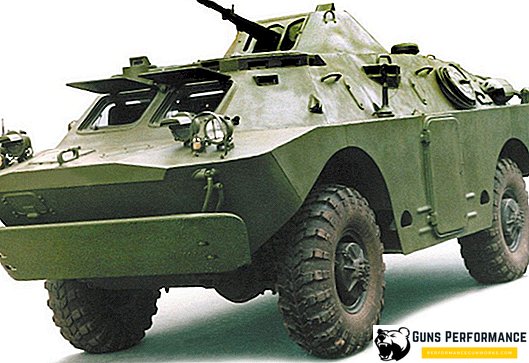An-74 is a light multi-purpose aircraft, which is a civilian modification of the An-72, a military transport aircraft. The An-74 aircraft was designed by Antonov ASTC, it can be used in various climatic zones, operating in a wide range of temperatures (from +45 to -60 ° С). Initially, the An-74 was created to engage in areas of the Far North.

The An-74 is designed as a multi-purpose aircraft, so its scope is quite wide. It can be used for servicing Arctic stations, carrying out passenger flights, transporting the wounded, used for ice reconnaissance, for research purposes, and also used as a cargo plane. An-74 demonstrates excellent technical characteristics, it can be operated on snowy and unprepared airfields, high-altitude areas, as well as fly during any weather and at any time of the day.

The history of the aircraft
In February 1982, the MGA and the MAP of the USSR decide to create an An-74 (formerly designated An-72A) to work in the difficult conditions of the Antarctic and the Arctic based on a modified version of the An-72, which was launched into serial production at KhAPO. In January 1983, the USSR Council of Ministers issued a decision to create the first experimental version of the An-74 with a wheeled chassis at the Kiev Mechanical Plant by modifying the An-72 aircraft.

An An-74 prototype makes the first flight on September 29 with crew headed by V.A. Shlyakhov and S.A. Gorbik. In August 1986, an international demonstration of the An-74 "USSR-58642" was organized in Canada at the aviation salon of Vancouver. In September 1990, the Ministry of Civil Aviation, without waiting for the completion of state tests, proceeded to conduct operational tests of the An-74 at the facilities of Chersky Concern "Yakutavia". In December, state tests of the An-74 pre-production machines, which were on the airfields in Ashgabat, Sochi, Sheremetyevo, Pavlovsk-Kamchatsky, Chersky, Gostomel, and Borispol, were successfully completed.

In April 1991, the decision MGA AN-74 aircraft admitted to work in civil aviation. The cargo version of the aircraft allows you to carry cargo up to 7.5 tons, taking into account up to 10 passengers with a cruising speed of 560-700 km / h at altitudes of up to 10,100 meters. Moreover, he can perform such specialized tasks as:
- ship escort;
- maintenance and organization of drifting stations;
- conducting research in the Antarctic and Arctic basins;
- reconnaissance of fish schools;
- visual ice exploration.
Under operating conditions, the An-74 can be easily converted into a fire-landing, sanitary, and other options.

Specifications
An-74 has the following specifications:
- The wing span is 31.89 m.
- The length of the aircraft is 28.07 m.
- The height of the aircraft is 8.65 m.
- The wing area is 98.62 m2.
- The mass of an empty aircraft is 18,900 kg.
- Maximum take-off weight is 36,500 kg.
- Engines - 2 TRD Progress D-36 ser. 2A.
- Traction is 2x6500 kg.
- The maximum speed is 750 km / h.
- Cruising speed is 580-700 km / h.
- Ferry range is 4400 km.
- The practical range with a load of 10,000 kg is 1,650 km.
- Practical range with a cargo load of 4400 kg is 4150 km.
- The practical ceiling is 10,100 m.
- The crew is 5 people.
- The payload is up to 5000 kg of cargo or 10 passengers.


Design features
- The cockpit provides excellent visibility as well as the possibility of piloting at aerodromes of limited size with landing and taking off along steep trajectories. The cockpit has an optimized placement of organs and controls, which is worked out on the stands in any flight situations. The crew consists of four pilots: a co-pilot, an aircraft commander, a flight engineer, a navigator, a flight equipment operator, if necessary. The aircraft is very easy to operate, mastered without difficulty engineering and flying personnel of medium qualification.
- The aircraft was designed according to the high-profile scheme, it has two D-36 turbofan engines installed over the wing of 6,500 kgf, and also the T-shaped tail assembly. In the design of the An-74 are widely used new technological processes, as well as structural materials. This allowed us to provide an excellent weight return of the aircraft.
- Installing engines with a sufficiently large offset over the upper surface of the wing forward virtually eliminates the ingress of foreign objects in the engines during takeoff and landing from the runway surface. It also increases the lift force of the wing due to the upper surface of the wing and the Coanda effect.
- Loading, as well as unloading of cargo in containers, goods that are packaged on pallets and others is carried out using an onboard loading device having a load capacity of 2500 kgf. The unloading and loading of self-propelled vehicles is carried out on their own, with the help of a cable loading device and a tractor loading non-propelled wheeled vehicles.

Modification of the An-74
- An-74-200 - civil modification.
- An-74D - The business version of a civilian aircraft. Salon is designed for 19 people.
- An-74T-200 - military transport version of the An-74. Crew reduced to 2 people.
- An-74T-200A - civil aircraft modified for military use.
- An-74MP - patrol version for naval aviation.
- An-74TK-100 - convertible cargo-passenger aircraft for flights of increased complexity.
- An-74TK-100S - sanitary option, equipped with modern medical equipment.
- An-74TK-200S - Sanitary option for Libya.
- An-74TK-300 - convertible civilian aircraft with engines under the wing.












